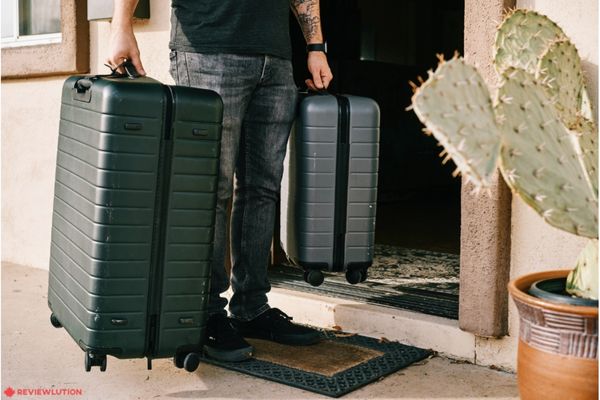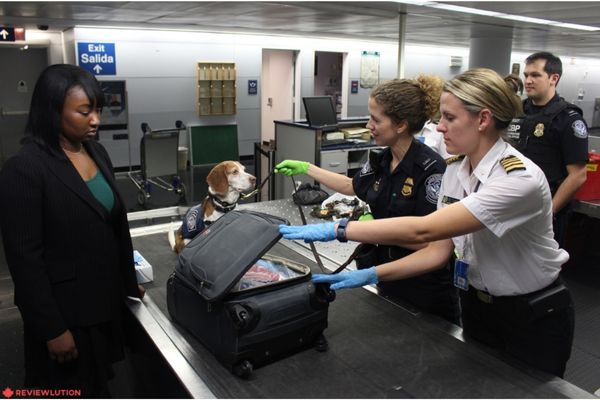How to Avoid Customs Charges from the USA to Canada?
If you’re a dedicated fan of international shopping, you know how costly and annoying customs charges can be. The good news is that there are several ways to avoid these fees, since they depend on the goods being shipped and the courier you choose. Here, I’ll explore some of the most common methods for how to avoid customs charges from the USA to Canada.
Let’s dig in!
How to Avoid Customs Charges from the USA to Canada?
So, how can you avoid forking out all your hard-earned cash on import duties in Canada? Surprisingly, the answer is relatively straightforward. Namely, you’ll just need to pay mind to a few hidden details.
However, I want to direct your attention to Canada’s customs duty calculator before moving on. This tool is made by the Canada Border Services Agency (CBSA) and shows you the exact amount you need to pay in import taxes for your package, saving you a lot of headaches in the process.
Ensure Goods are Made in the USA
Interestingly enough, the simplest way to avoid charges is to ensure the shipped products are actually made in the USA. By meeting this requirement, you’ll slip by without paying a dime. But why is this so?
Well, Canada is a signee to two trade treaties facilitating shopping and importing. One is the North American Free Trade Agreement (NAFTA), which eliminates all tariff and non-tariff barriers between Canada, the USA, and Mexico, provided the goods come directly from these countries. Therefore, for American products, US to Canada duties are nonexistent!
I’d like to add that Canada has also signed a free trade agreement with the European Union, called the Comprehensive Economic and Trade Agreement (CETA), which has eliminated duties on 98% of products traded with the EU. Additionally, the United Kingdom and Canada also signed the Canada-United Kingdon Trade Continuity Agreement (Canada-UK TCA).
Ensure the Sender Includes an Invoice
You can also dodge Canada’s import duties by ensuring that the sender includes an invoice with the value and necessary documentation of the shipped product. That way, products under $20 will allow you to bypass the 5% Goods and Services Tax (GST). On the other hand, anything above $20 is subject to custom assessment, after which you need to pay duties.
Expectedly, the higher the value of your package, the more duties you’ll pay. In addition, the fees will also vary depending on the country of the goods. Plus, if someone is sending you a gift, the threshold of tax and duties is $60. I’ll talk more about importing gifts below.
Self-Clear Shipped Products
If you want to avoid paying duty on shipped items and evade the high brokerage fees from courier companies, you have the choice to self-clear the imported products. Self-clearing can be as easy as collecting some documents about your shipment and making a trip to your local CBSA office.
Self-clearing means that you can pick up your package straight from the courier’s warehouse, so you don’t have to wait for them to deliver it and charge you. Therefore, to self-clear, you’ll need to visit your local CBSA office and provide them with your shipment identification, invoice, and your ID.
Send Your Item as a Gift
Another easy way to avoid paying duties from US to Canada is to have your shipment sent as a gift. Namely, if you have friends or family in the States, you can ask them to send your shipment personally and include a card to indicate that it’s a present.
However, as I already mentioned, this works only if the value of the goods is less than $60. If it’s higher than this amount, duties and taxes will still apply. Moreover, keep in mind that some items do not qualify for the gift exemption, regardless of their value. These include:
- Alcohol
- Tobacco
- Advertisements
- Items sent by businesses
Use a Shipping Platform for Duty and Tax Visibility
Finally, using a shipping platform like eShipper can enable you to skip additional charges by providing complete visibility into duties and taxes. Therefore, you can be prepared for any fees that may apply before you even ship your package. Sites like these calculate the duties for Canada, so you won’t have to guess the costs.
To use a shipping platform, you’ll need to sign up and add your shipping information. Then, you can compare rates from multiple carriers and decide which is best for you. After this, you can track and trace your package and get regular shipping updates until your parcel arrives.
What Are the Different Import Fees for Canada?
Canada’s import duties include three different categories: import taxes and customs duties, brokerage fees, and sales taxes. Let’s break it down.
Import Taxes and Customs Duties
The first type of fee you may encounter is the import tax. The import tax in Canada is a federal tax levied on goods imported into the country. The rate of this tax depends on the type of goods being imported and the country it’s coming from, so the cost might be harder to predict.
Brokerage Fees
In addition to import taxes and duty fees in Canada, you may also have to pay brokerage fees if you want the shipment delivered straight to your door. Therefore, each courier charges its own fees and the rates from company to company may vary significantly.
In fact, private couriers like DHL and UPS are part of a government strategy to expedite the delivery of low-value shipment goods (items under $2500), resulting in higher fees than national carriers like Canada Post. Generally, brokerage fees cover paperwork, taxes, and customs duties, along with a service fee.
Sales Tax
Last but not least, the sales tax also plays a big role in shipping costs and Canada’s customs duty rates. Depending on the value and type of shipment, you’ll most likely have to pay the 5% GST. Additionally, Canadians in certain provinces will have to pay the GST and the Provincial Sales Tax (PST), while others will only need to pay the Harmonized Sales Tax (HST).
Here’s what you’ll need to pay on your shipped goods depending on your province:
GST and PST
- British Columbia
- Manitoba
- Quebec
- Saskatchewan
HST
- New Brunswick (15%)
- Newfoundland and Labrador (15%)
- Nova Scotia (15%)
- Ontario (13%)
- Prince Edward Island (15%)
GST only
- Alberta
- Northwest Territories
- Nunavut
- Yukon
How Much Do Different Couriers Charge?
To help you make an informed decision when selecting a courier, I’ll mention what the most popular carriers charge for their services. Let’s take a look.
UPS
Although the UPS website does not list any specific fees for importing goods into Canada, it says that you may be charged with duties and taxes. However, you can check out the customs clearance rates and calculate their brokerage fee from the comprehensive table. Moreover, you can also see the disbursement fees on the same page.
FedEx
Similar to UPS, FedEx doesn’t have state-specific fees for importing. However, the site provides a useful option for users to check their shipping rates depending on their particular information. Of course, the price that will appear after the questionnaire is not the full cost, as it doesn’t include import taxes and duties, which will be calculated by the CBSA further down the line.
DHL
According to DHL’s FAQ page, DHL’s import fees in Canada are not included in the prices because the customs authorities are the only ones who can determine which duties and taxes are applicable to a specific parcel. Therefore, the numbers depend on the information on the label and the customs paperwork. Meanwhile, you can check the options and basic fees here.
USPS/Canada Post
Canada Post’s customs fees are generally cheaper than the other private couriers mentioned so far. Namely, Canada Post charges a $5 handling fee for collecting duty and taxes instead of the CBSA, or an $8 handling fee if the item goes through Priority Courier. For the company’s shipping rates, check out this article.
Finishing Thoughts
There you have it – a comprehensive explanation of how to avoid customs charges from the USA to Canada. You’ve discovered some of the most common methods for bypassing duties when importing products. So, by following these tips, you can ensure you receive your package without unexpected fees. Now online shopping won’t cost you an arm and a leg!
FAQ
To self-clear your shipment in Canada, you’ll need to have a commercial invoice or other documentation that proves the value of the goods, pay the applicable duties and taxes, and get a release from the CBSA. Self-clearing is done through a CBSA office and allows you to save money on administrative fees.
The CBSA calculates duties as a percentage of the value of the goods being shipped. The duty rate will depend on the type of goods you’re importing and the country they’re coming from or were made in. Therefore, you won’t know the fees you’ll need to pay before you find out the value and specifics of your shipment.
If you want to avoid paying duty on shipped items, you can: ensure the shipped goods were made in a country with which Canada has a trade treaty, ensure the sender includes an invoice, self-clear your shipment, have your items sent as a gift, or use a shipping platform for complete tax visibility.












